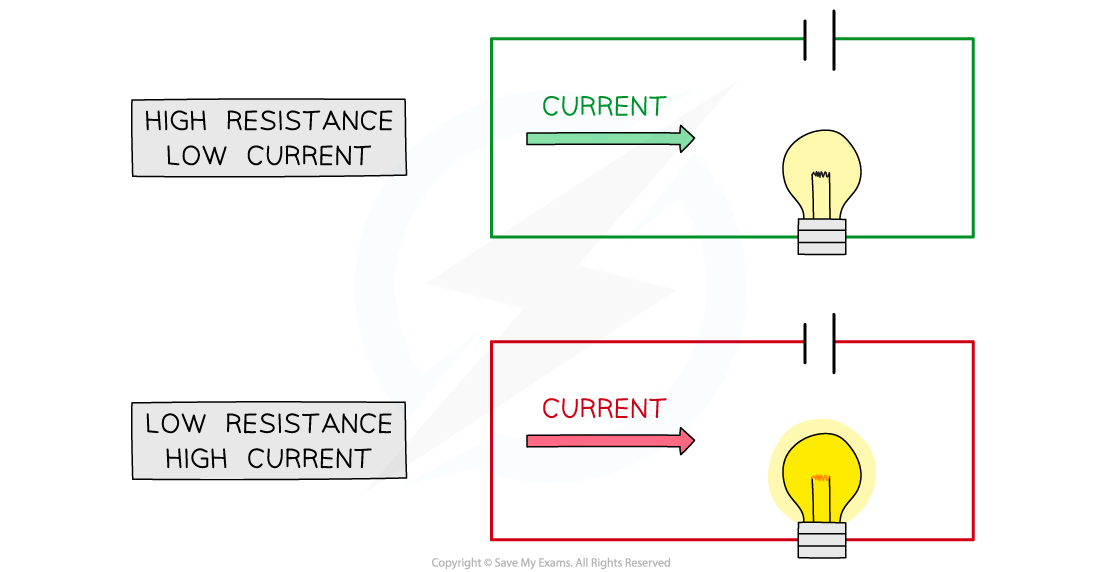Voltage-Current (V-I) Graphs (SQA National 5 Physics): Revision Note
Exam code: X857 75
Voltage-current (V-I) graphs
Resistance
Resistance is defined as:
The opposition to the flow of charge
Resistance is measured in units of ohms (Ω)
A resistance of 1 Ω is equivalent to a voltage across a component of 1 V which produces a current of 1 A through it
The resistance of a component controls the size of the current in a circuit
For a given voltage across a component:
The higher the resistance, the lower the current that can flow
The lower the resistance, the higher the current that can flow
All electrical components, including wires, have some value of resistance
Wires are often made from copper because it has a low electrical resistance
This is why it is known as a good conductor
The effect of resistance on the current in a circuit

When a circuit has a high resistance, a lower current will flow, and vice versa
Ohm's law
Current,
, potential difference,
, and resistance,
, all affect one another
Changing any one of these in a circuit changes all of them
The current in a resistor (at a constant temperature) is directly proportional to the potential difference across it
This means that the resistance remains constant as the current changes
This relationship is described by the following relationship, known as Ohm's law
Where
= resistance, measured in ohms (Ω)
= potential difference, measured in volts (V)
= current, measured in amperes or amps (A)
Voltage-current (V-I) graphs
Ohm's law can be verified using a voltage-current (
-
) graph
If a component obeys Ohm's law:
the graph will be a straight line which passes through the origin
the resistance is constant
If voltage is on the y-axis and current is on the x-axis, then the gradient is equal to:
For a component which obeys Ohm's law, such as a resistor, the ratio of
is constant at all values of current
Therefore, the resistance is constant and equal to the gradient:
Voltage-current graph for a fixed resistor


Unlock more, it's free!
Did this page help you?